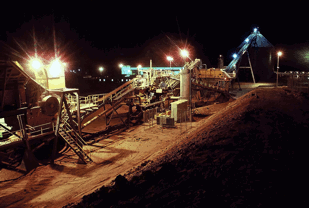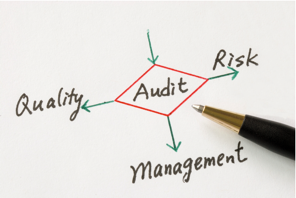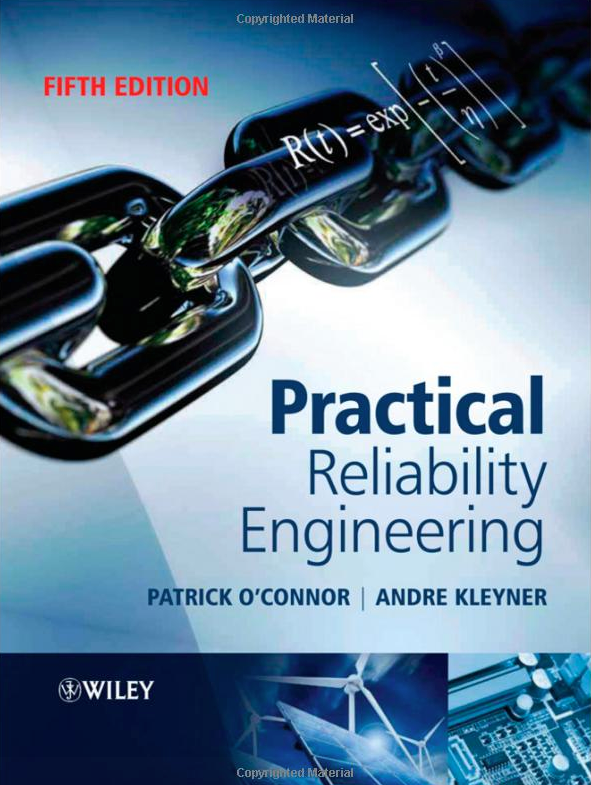C903: RCM Facilitation and Analysis
RCM is the best tool available to decide what maintenance to do to your equipment
 RCM = Reliability Centred Maintenance. The maintenance of physical assets needs to be scientifically determined based on reliability considerations. Reliability stands at the centre. This is the principle that improved the safety of modern jet liners and many industries to the level which improves the quality of our lives greatly.
RCM = Reliability Centred Maintenance. The maintenance of physical assets needs to be scientifically determined based on reliability considerations. Reliability stands at the centre. This is the principle that improved the safety of modern jet liners and many industries to the level which improves the quality of our lives greatly.
Modern production equipment design is complex. It thus needs to be maintained scientifically. So how do you decide what maintenance to do on your critical production equipment? By deciding which failures are the ones that matter and then designing maintenance tasks for them.
The maintenance suggested by the manufacturer of your equipment often leads to one of two things. In some cases the manufacturer's recommendations lead to over-maintaining the equipment and in other cases under-maintaining them.
The reasons for this are:
- The manufacturer does not understand your specific production circumstances.
- The manufacturer is often over-conservative in their approach to ensure that their good name is preserved. This leads to unnecessary expensive maintenance.
 Reliability Centred Maintenance (RCM) has become an industry standard. It is the tool of choice for the design and development of effective maintenance plans.
Reliability Centred Maintenance (RCM) has become an industry standard. It is the tool of choice for the design and development of effective maintenance plans.
One of the key drives behind RCM was to assure a high level of safety performance. The safety record of modern passenger airliners bears this out. Similar success has been achieved in many industries using RCM.
Courses in RCM
We present two courses in RCM: C903 and S801. They provide a good theoretical and practical base for the use of the RCM technique.
The difference between the two courses are:
- The three day short course (S801) teaches RCM as technique.
- The five day course (C903) adds two days. These two days essentially adds facilitation skills to S801.
Course Content
|
Module 1 – RCM Principles
|
|
Module 2 – Select Failure Modes
|
|
Module 3 - Select Maintenance Tasks
Workshop: |
|
Module 4 – Compile Maintenance Plan, RCM Living Programme
|
|
Module 5 – RCM Facilitation Workshop: |
|
|
Who Should Attend
The C903 course is recommended for facilitators of RCM sessions. The S801 course is meant for participants in RCM design sessions. Any person who needs to apply the RCM logic to a system or parts of a system will also benefit from any of the two courses.
Important note: Laptop computer required – refer to terms and conditions on Course Registration form, and footnote on the Course Listing.
|
Credits 16*, level 6** CPD Points: 5 * The course comprises 80 hours of study, of which 40 hours are in class, **Higher Diploma level |
|
Textbook Provided
|
C902: Leadership in Asset Management
Leadership in Asset Management presents a considerable challenge, which needs to be taken up with the necessary skills in the pocket
 The Asset Management / Maintenance function intends keeping the Physical Assets in its care in a good operational condition. Its objective is to sustain a high level of Operational Readiness (Availability, Reliability, Operability, and Qualibility), at acceptable levels of Safety, Environmental Risk, and Cost.
The Asset Management / Maintenance function intends keeping the Physical Assets in its care in a good operational condition. Its objective is to sustain a high level of Operational Readiness (Availability, Reliability, Operability, and Qualibility), at acceptable levels of Safety, Environmental Risk, and Cost.
Leadership in Asset Management involves leading the functions of Asset Management / Maintenance. It particularly keeps itself busy with achieving success through people. The objective of its companion course, C901, is to equip engineers with knowledge regarding the strategic and tactical aspects of Asset Management / Maintenance Engineering.
Even so, C901 cannot include all the necessary learning to prepare an individual to be a top class Asset Manager / Maintenance Manager. C902 fulfills that purpose. The two together produce the foundation for Asset Management Excellence and Career Progression.
Leading the Asset Management function needs considerable skill. It is much more than just managing technical results. Asset Managers need to steer the function to have the greatest effect on the output of the organisation.
To achieve this the Asset Manager should:
- Understand the Asset Management / Maintenance function and the factors causing success well.
- Be able to analyse and understand maintenance situations.
- Have a good knowledge of modern management methods.
- Understand that success comes through people.
This course aims to provide the skills, knowledge, and innovative capacity to practicing Asset Managers / Maintenance Managers to make them into successful achievers. This includes addressing and teaching them knowledge and vocational insight into issues such as:
- The profit impact of a properly run Asset / Maintenance department.
- The challenges and dilemmas inherent to maintenance today; how to manage it, understanding the ‘New Maintenance Management Paradigm’.
- Classical Management Theory as a basis for success.
- Leadership and its critical role in maintenance.
- Achieving personal mastery, so as to be enabled to lead others successfully.
- Maintenance logistics - the ‘logics’ of the maintenance organisation - its role in achieving a successful maintenance department.
- Creating and maintaining a workplace culture that fosters success.
- Managing and developing a workforce to achieve success.
Course Content
|
Module 1 – Understanding Asset
|
Module 2 – The New Asset Management Paradigm
|
Module 3 – Leadership
|
|
Module 4 – Maintenance Logistics
|
Module 5 – Culture the Binding Force
|
Module 6 – Successful People Management
|
Who Should Attend
The course is intended for Asset Managers, Maintenance Managers, Maintenance Engineers, and all others who manage the Asset Management / Maintenance function.
|
Credits 16*, level 6** CPD Points: 5 * The course comprises 80 hours of study, of which 40 hours are in class, **Higher Diploma level |
|
Textbook Provided
|
C901: Maintenance Practice for Asset Management Engineers
C702: Reliability Engineering in Asset Management
Reliable equipment produces sustainable production and safety results

Reliability is a built-in design feature of any physical asset. The designer makes decisions that influence the reliability of the machine/system in a major way. These decisions cannot be significantly changed during the operating and maintenance phase (the working life of the asset) without rebuilding the asset.
Naturally, achieving the designed-in reliability requires that the asset be maintained and operated so that failures are managed and their consequences minimised. This goes without saying, but does not change the fact that we cannot fundamentally improve the built-in reliability of the system in a major way.
 If the machine is not maintained properly, the built-in reliability of the system will be affected negatively. Although reliability cannot be fundamentally improved through maintenance, it can at least be preserved by the appropriate quality maintenance actions. This can be achieved in two ways, namely by ensuring that the right maintenance actions are taken, and that these maintenance actions are carried out diligently and in a professional manner by the maintenance staff.
If the machine is not maintained properly, the built-in reliability of the system will be affected negatively. Although reliability cannot be fundamentally improved through maintenance, it can at least be preserved by the appropriate quality maintenance actions. This can be achieved in two ways, namely by ensuring that the right maintenance actions are taken, and that these maintenance actions are carried out diligently and in a professional manner by the maintenance staff.
Asset Management / Maintenance engineers need to be the operating company's experts on the subject of reliability. They are firstly necessary to guard the reliability of operating equipment against degradation and abuse. Secondly, they should be the initiators of reliability improvement drives, leading to higher operating capability and thus profit.
Course Content
|
Module 1
|
Module 2
|
Module 3
|
|
|
Module 4
|
Module 5 (Day 5)
|
Who Should Attend
The course is intended for Asset Management Engineers, Maintenance Reliability Engineers, and Maintenance Engineers.
Important note: Laptop computer required – refer to terms and conditions on Course Registration form, and footnote on the Course Listing.

|
Credits 16*, level 6**
* The course comprises 80 hours of study, of which 40 hours are in class, with a further 40 hours to prepare for tests and the final examination. **Higher Diploma level.
|
|
Textbook Provided |
C501: Maintenance Shutdown and Project Management
'Good maintenance project managers are both scarce and worth their weight in gold'
 Maintenance abounds with projects, originating from the objective of high plant uptime. These include a seemingly perpetual stream of small and not so small improvement projects requested by production, as well as those deemed necessary by observation of failure trends.
Maintenance abounds with projects, originating from the objective of high plant uptime. These include a seemingly perpetual stream of small and not so small improvement projects requested by production, as well as those deemed necessary by observation of failure trends.
Furthermore, the nature of the equipment being maintained often necessitates grouping preventive maintenance actions into shutdown occasions, varying from a weekly maintenance shift to extended maintenance occasions, ranging from a few days to a week or more. As lost production time is expensive, these events need to be managed closely using project management principles. It is consequently necessary to have a sound knowledge of the subject.
 Short shutdown turnaround times are vital to profitability
Short shutdown turnaround times are vital to profitability
Project and Shutdown Management embraces a variety of disciplines, including detailed project scheduling, task planning and control, purchasing control, cost control, and the ability to coordinate actions under highly pressurised circumstances.
The course in Shutdown and Project Management endeavours to provide the necessary theoretical foundation to equip maintenance people with the necessary skills to facilitate successful Maintenance Shutdowns and Project Management occasions. It is presented by a seasoned maintenance manager with extensive experience in this field.
 The course is presented in an alternating fashion, with hands-on practical sessions in the use of Microsoft Project, to facilitate project planning and control, being interspersed between successive project management foundational sessions. Course documentation includes a comprehensive course file, and the book 'Microsoft Project 2010 Step by Step' (or the older ‘Microsoft Project 2007 Step by Step’ until our stocks are depleted), by Carl S. Chatfield and Timothy D. Johnson, Microsoft Press.
The course is presented in an alternating fashion, with hands-on practical sessions in the use of Microsoft Project, to facilitate project planning and control, being interspersed between successive project management foundational sessions. Course documentation includes a comprehensive course file, and the book 'Microsoft Project 2010 Step by Step' (or the older ‘Microsoft Project 2007 Step by Step’ until our stocks are depleted), by Carl S. Chatfield and Timothy D. Johnson, Microsoft Press.
Course Content
|
Module 1
|
Module 2
|
Module 3
|
|
Module 4
|
Module 5
|
Note: Hands-on work is based on the Microsoft Press book 'Microsoft Project 2010 Step by Step' (or the 2007 book until stock is depleted) by Carl S. Chatfield and Timothy D. Johnson, of which each student receives a copy.
Who Should Attend
The C501 course is primarily intended for maintenance managers (to manage maintenance shutdowns and maintenance projects), and secondly for maintenance planners (who need to plan shutdowns and maintenance projects).
Important note: Laptop computer required – refer to terms and conditions on Course Registration form, and footnote on the Course Listing.
|
Credits 16*, level 5** CPD Points: 5 * The course comprises 80 hours of study, of which 40 hours are in class, with a further 40 hours for the assignment. **Occupational Certificate level |
C302: Advanced Maintenance Planning
While the Maintenance Planning course (C301) fundamentally prepares a planner for the task of planning, more is required to ensure a high level of output from the planning function. This has led to many requests for an advanced course.
Maintenance planning is the function that ensures that the correct maintenance actions are performed to the right equipment at the right time, and having all necessary preparation and resources in place. It is furthermore arguably the function that ensures that all maintenance actions can be completed correctly and efficiently.

Make sure that your artisans are used efficiently by giving them tasks that are "ready to go" **
 Maintenance Planning is becoming more and more important to secure the success of maintenance actions. The theory and tools of maintenance planning are also becoming more sophisticated.
Maintenance Planning is becoming more and more important to secure the success of maintenance actions. The theory and tools of maintenance planning are also becoming more sophisticated.
The Maintenance Planning course (C301) prepares planners to understand the first part of the planning process, namely Work Order Planning. But it does not address the process of preparing the Weekly Schedule, and it does not equip the planner with advanced capabilities, such as Task Design, and Work Measurement. These are provided in this advanced course. This course:
1. Completes the tuition of the planner regarding the full planning function.
2. Prepares he planner for taking the role of senior or head planner after gaining enough experience.
This course (C302) is ideally aimed at the further development of maintenance planners after they successfully completed the course in Maintenance Planning and had time to implement and integrate that knowledge in practice.
Who Should Attend
The course is intended for maintenance planners and those who manage them. Having attended and passed the C301 course is prerequisite for enolling for this course.
** Tasks that are "ready to go" are ones for which all the necessary resources (men, materials, permits, instructions, drawings, manuals, etc.) are available for the artisan to complete the task without delays.
Course Content
|
Module 1
|
Module 2
|
Module 3
|
|
Module 4
|
Module 5
|
|
Credits 16*, level 5** * The course comprises 80 hours of study, of which 40 hours are in class, with a further 16 hours of private study, and 24 hours for an assignment. **Occupational Certificate level |
Prerequisites: Completion of C301: Maintenance Planning |
C301: Maintenance Planning
If one compares maintenance to the human body, maintenance planning provides the thinking capacity that determines what work to do, and when, while the artisans provide the doing capacity of the hands and feet, and supervisors provide the controlling function of the brain, steering the hands and feet.
 Because nothing in life takes place before it has been thought through, no worthwhile maintenance task can take place before planning (naturally including any planning done by supervisors and artisans).
Because nothing in life takes place before it has been thought through, no worthwhile maintenance task can take place before planning (naturally including any planning done by supervisors and artisans).
 No worthwhile maintenance task can take place without good planning
No worthwhile maintenance task can take place without good planning
Maintenance planning fulfils a crucial role in the organisation. Maintenance success is absolutely dependent on good scheduling of maintenance work, proper task planning, and timely procurement of parts and materials. The Maintenance Planner plays a critical role in achieving this essential outcome.
The course thus has as its purpose to prepare Maintenance Planners for this role. This includes training in the various scheduling techniques, such as simple time slot scheduling, detailed network scheduling of maintenance shutdowns and projects, as well as batch workshop scheduling. It also includes training in task planning methods, procurement methods, use of maintenance systems, task flow optimisation, maintenance information analysis, and the support of maintenance management through well defined and formatted reporting.
The course is extremely hands-on, allowing candidates to practice the skills learnt through practical application during four to five group assignments per day. This is augmented by an application project following course completion.
Course Content
|
Module 1
|
Module 2
|
Module 3
|
|
Module 4
|
Module 5
|
|
Credits 16*, level 5** * The course comprises 80 hours of study, of which 40 hours are in class, with a further 16 hours of private study, and 24 hours for the assignment. **Occupational Certificate level |
|
Who Should Attend
The course is intended for maintenance planners, maintenance supervisors, artisans and those who manage them.
The reason for including the wording 'those who manages them' in the sentence above is that we often find that some class of Asset Management / Maintenance people are sent on courses without the person managing them being able to activate their newly acquired knowledge after the course. What rather happens is that they are managed exactly in the same way as before the course, which often leads to the course not having the required effect.
Artisans are also specifically added above as the effect of maintenance planning and the information fed back to the Computerised Maintenance System is to a large extent dependent on their knowledgeability of, and support to, the Maintenance Planning function.
C201: Asset Management for Maintenance Supervisors
The Maintenance Supervisor needs to be able to get results through people
 It is certainly so that the technology, that the maintenance function maintains, needs a sophisticated approach to maintenance. However, there is a growing gap between this need and maintenance’s ability to fulfil it.
It is certainly so that the technology, that the maintenance function maintains, needs a sophisticated approach to maintenance. However, there is a growing gap between this need and maintenance’s ability to fulfil it.
The person that plays a critical role in this is the maintenance supervisor. He/she must firstly understand and embrace modern maintenance technologies (such as Condition Based Maintenance, Laser Alignment, and Tribological Practice), methodologies (such as Reliability Centred Maintenance), and Systems.
Secondly, the role of maintenance workers implementing and effectively using these technologies, methodologies, and systems is critical to the success of the organisation. And the only person that can ensure that this does occur is the Maintenance Supervisor.
He/she should be able to get the best (sometimes even the almost impossible) from maintenance artisans and workers to ensure that this gap is closed properly.
 The problem is that maintenance supervisors are mostly appointed from amongst the artisan fraternity and have to supervise on the little knowledge regarding supervision that he/she gained from his/her previous supervisor(s). Although this often teaches one the negatives of wrong supervision and some of the positives, it is simply not enough to produce the supervisor that will get quality maintenance output through other people.
The problem is that maintenance supervisors are mostly appointed from amongst the artisan fraternity and have to supervise on the little knowledge regarding supervision that he/she gained from his/her previous supervisor(s). Although this often teaches one the negatives of wrong supervision and some of the positives, it is simply not enough to produce the supervisor that will get quality maintenance output through other people.
This course above all focusses on three aspects of supervision, namely to be open for new learning, getting results through people, and manage the facilities/resources to his/her disposal effectively. Its aim is to effectively motivate and equip the maintenance supervisor for his/her role in ensuring maintenance success.
Course Content
|
Module 1
|
|
Module 2
|
|
|
|
Module 3
|
Module 4
|
|||
|
Module 5
|
Who should attend
The course is intended for maintenance supervisors, maintenance charge hands, and artisans who have to perform supervisory relief.
|
|
|
Credits 12*, level 5** * The course comprises 60 hours of study of which 32 hours are in class, with a further 12 hours of private study, and 16 hours for an assignment. **Occupational Certificate level. |
|
 |
We live in a time of high economic risk
Maintenance is not spared the magnifying glass of cost cutting, as it is one of the bigger contributors of business cost. It thus has to be as efficient as it can be.
And there is no efficiency measure as good as a competent work force. Employing the best maintenance technology, philosophies and techniques can of course do much. But all of these are only as good as the people who drives them, and those who implement their outcomes.

Peter Senge promotes the idea of a Learning Organisation to foster innovation at every level of the business. Although such a Learning Organisation involves much more than training, training is at its foundation.
We thus believe that maintenance training is and will be one of the major drivers of maintenance success. And consequently business success....
Because of this it is our view that it is inevitable that the traditional engineering departments at universities will have to be augmented by Maintenance Engineering departments. This college is a stepping stone in that direction.
| Additional information: | |
A short history of Terotechnica Maintenance College
The Terotechnica Maintenance College is a division of M-Tech Consulting Engineers (Pty) Ltd.
M-Tech was founded as a maintenance consulting company. However, maintenance training became the main activity in 1991. This was after it became clear that industry has a great need for maintenance training.
The Terotechnica Maintenance College has trained thousands of Maintenance Practitioners at different levels in the industrial organisation in the Art and Science of Maintenance Engineering over the 19 years of its existence.
The name Terotechnica Maintenance College was registered in 2003. The name is derived from the name Terotechnology, which is a historic name given in 1969 by a commission of enquiry into maintenance. Their suggestion was that the name Terotechnology should be used for what has come to be known as life cycle management.
The name Terotechnica was used in the 80's for a later discontinued maintenance journal. It is thus a history rich name, which we are proud to bear.
The college now offers tuition at three different levels: Diplomas, Certificates, and Short Courses.
| Additional information: | |
More...

Dr Jasper L. Coetzee
Welcome by the Principal of Terotechnica Maintenance College
"I hereby wish to extend a heartiest welcome to maintenance practitioners and would be practitioners to our world of imparting Asset Management / Maintenance knowledge to others. We have, as our M-Tech website states, a passion for maintenance, maintenance people, and their empowerment to practice maintenance excellently. Enjoy your study into the new and old realities of the battle against failure, and then go and 'just do it'."
Also see our philosophy
| Additional information: | |
Maintenance success elements
To understand our philosophy regarding maintenance training, it is essential to understand what we regard to be the important elements ensuring maintenance business success, which are shown in the picture on the right of the page.
 The following seven elements, which are shown in the figure, should be well developed for a maiontenance organisation to serve the industrial business well:
The following seven elements, which are shown in the figure, should be well developed for a maiontenance organisation to serve the industrial business well:
1. A well systemised organisation
2. Proper equipment life-cycle management
3. A good maintenance operational system
4. The implementation of the correct level of maintenance technology
5. A 'deep' level of maintenance expertise (at all levels of maintenance operations and management)
6. Well designed maintenance logistics
7. A high level of development of personnel
If all these are in place, the maintenance function will support the organisation well in achieving its production and income goals.
Also visit our Qualifications Offered page for more detail regarding the 7 points listed above.
We believe that Maintenance Engineering is moving towards being an own Engineering Discipline in its own right, both at undergraduate and graduate levels.
The diploma and other courses that we present are a necessary stepping stone in that direction.
As a part of the logical outflow from this philosophy, our Managing Director is also involved in postgraduate tuition and research at the University of Pretoria.
| Centre for Asset Integrity Management | Additional information: | |
Save with in-house courses
Some organisations find it beneficial to bring us to the students, instead of the students to us. The travel and subsistence is certainly cheaper for one or two lecturers than for a whole group of your people, and there is an attractive discount for in-house courses with more than 10 students.
At some occasions organisations have even endeavoured to arrange a local group course, where they arrange a quasi-public course with students from other organisations in their city/town also attending.
 We require a minimum of five students for an in house course.
We require a minimum of five students for an in house course.
The cost per student for in-house courses with between 5 and 10 students the same as the advertised rate for our public courses in Pretoria. To this is added the cost of travel and subsistence for our lecturer(s).
Above ten students a discount of 20% applies on the advertised rate for our public courses in Pretoria (the cost of the travel and subsistence of our lecturer(s) will still apply).
Please contact our Registrar for a booking.
Telephone (016) 932 1629 or (012) 548 6096 or 082 855 8016
E-mail: This email address is being protected from spambots. You need JavaScript enabled to view it.
Please Note: Conditions of Entry and Payment Terms on the Administration page.
Rules for international study
Where international students (typically from other African countries) attend our public courses, the same prices/conditions naturally apply that is applicable to South African students. We may however in some cases strictly require up front payment.
Where international students wish to do coursework on a distance study basis, the same rules as that for local study applies, apart from mailing cost which will be determined on a case by case basis. To allow for international currency fluctuations, the cost of courses in such cases will be charged in US Dollars:
- Two day course $ 600
- Three day course $ 900
- Four day course $ 1200
- Five day course $ 1500
- Diploma $ 6000
The mail cost will be determined an a case by case basis. See the contact details of our course administrator below.
In the case of international in house courses, the conditions on our In house courses page apply. Prices may be escalated to allow for extra travel time and inconvenience to lecturers.
Please contact our Registrar for a booking/quotation.
Telephone +27 16 932 1629 or +27 12 548 6096 or +27 82 855 8016
E-mail: This email address is being protected from spambots. You need JavaScript enabled to view it.
Please Note: Conditions of Entry and Payment Terms in the Administration page.
| Additional information: | |







